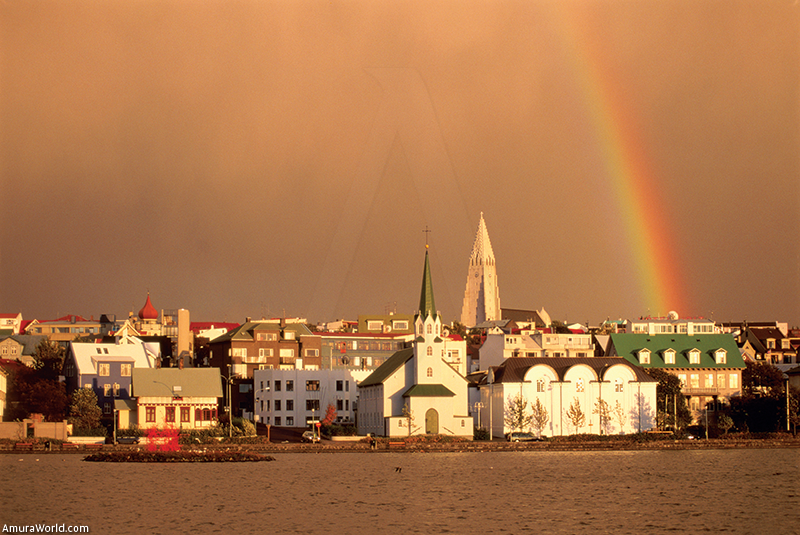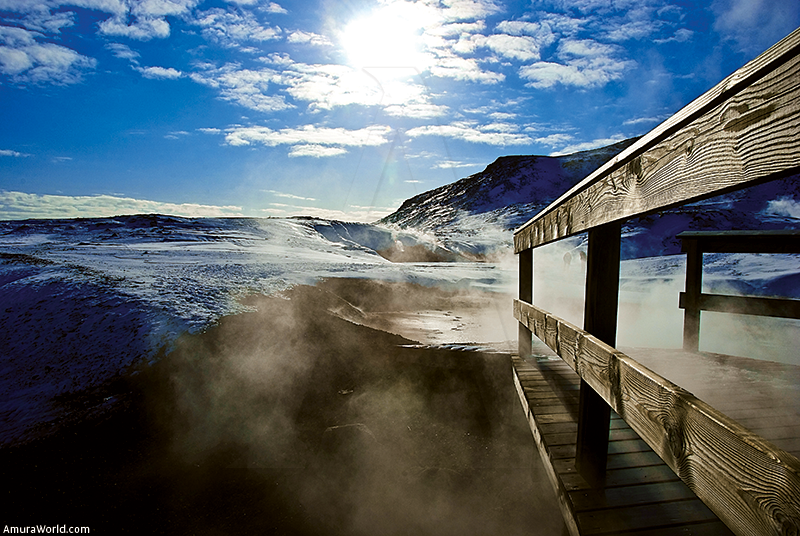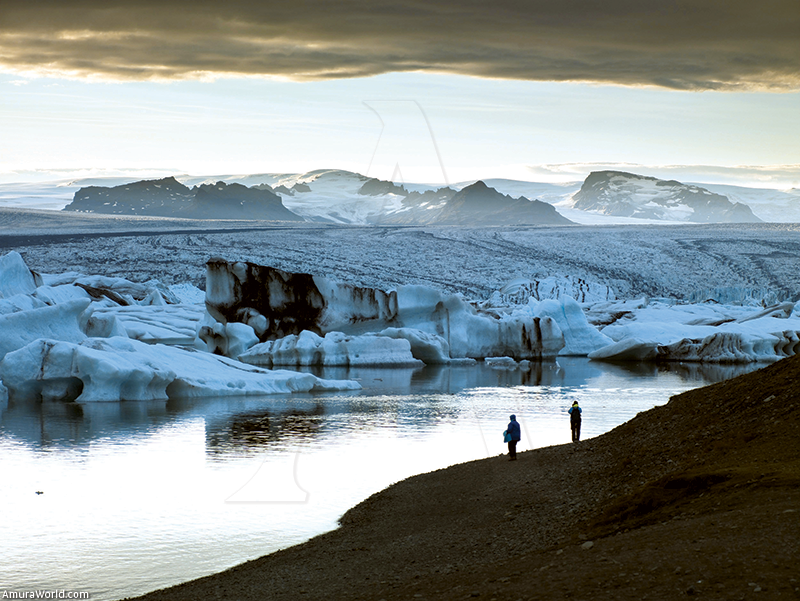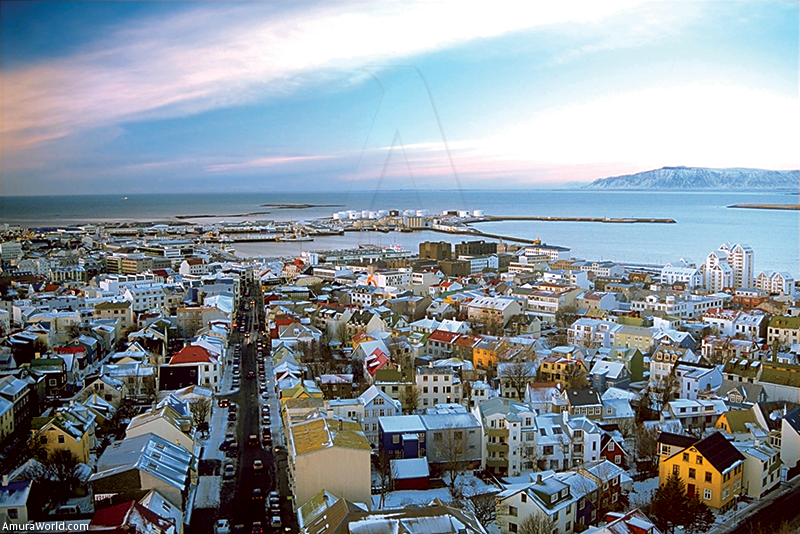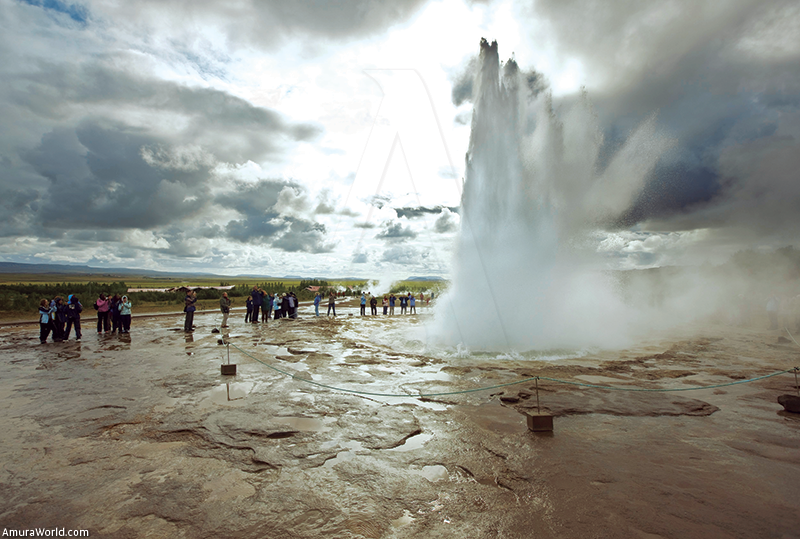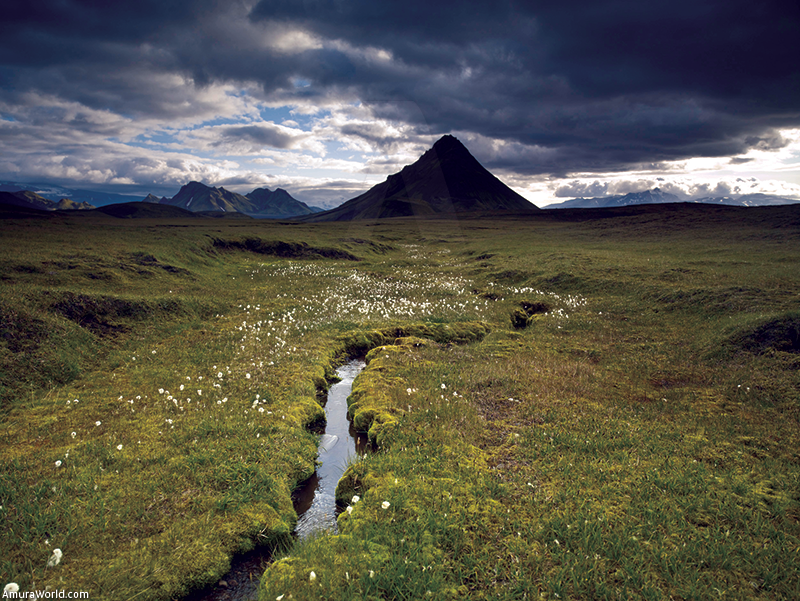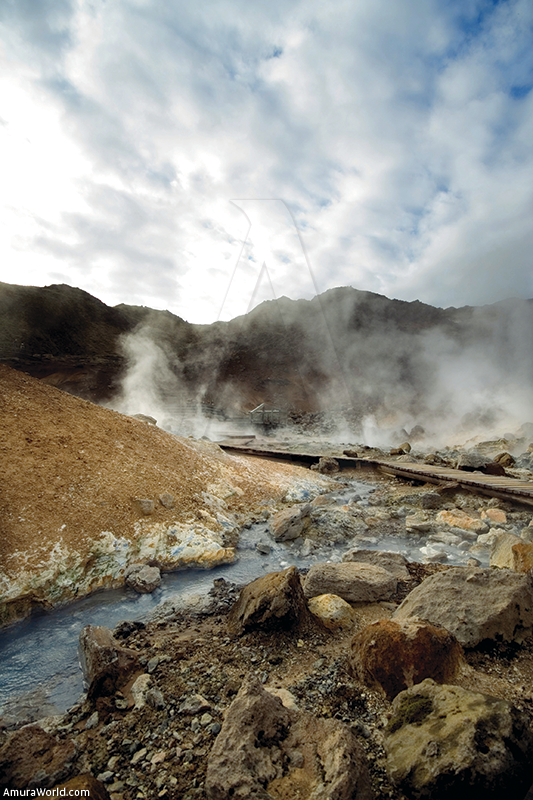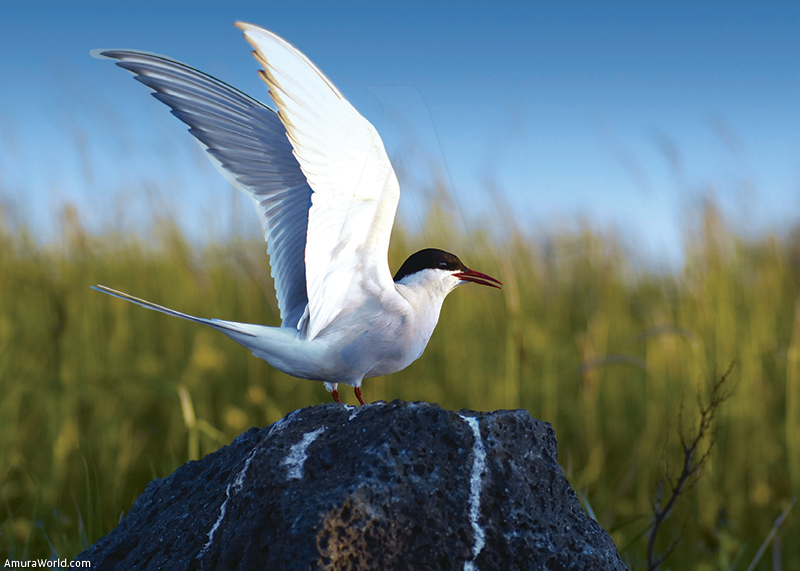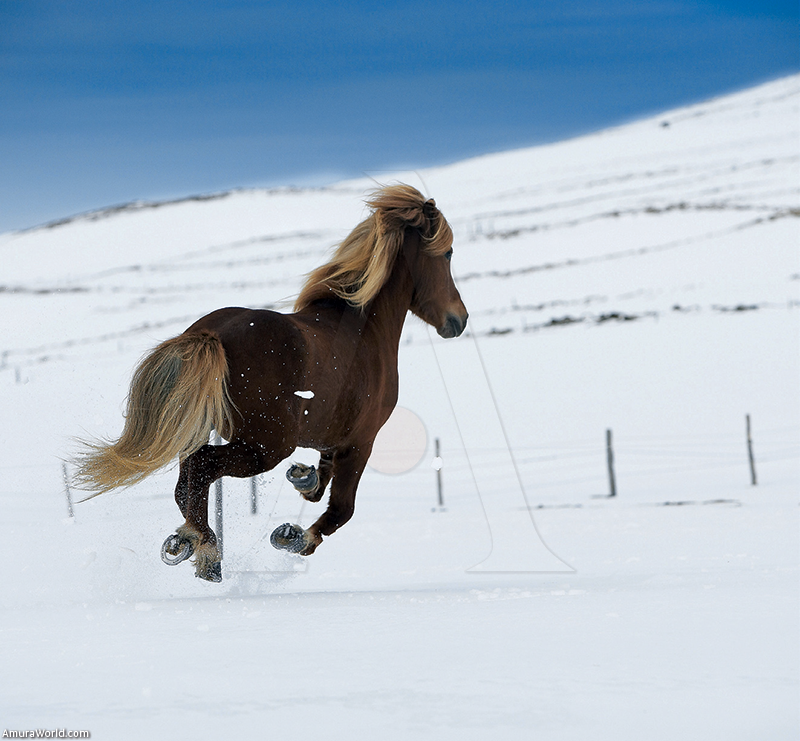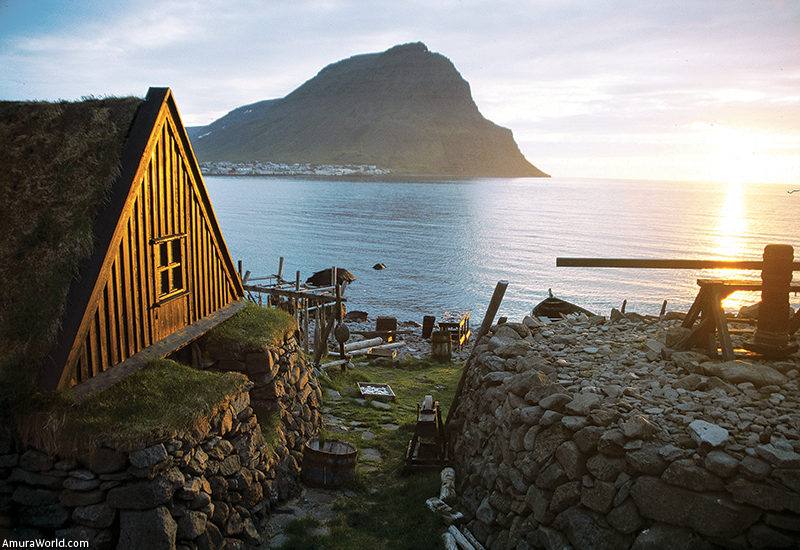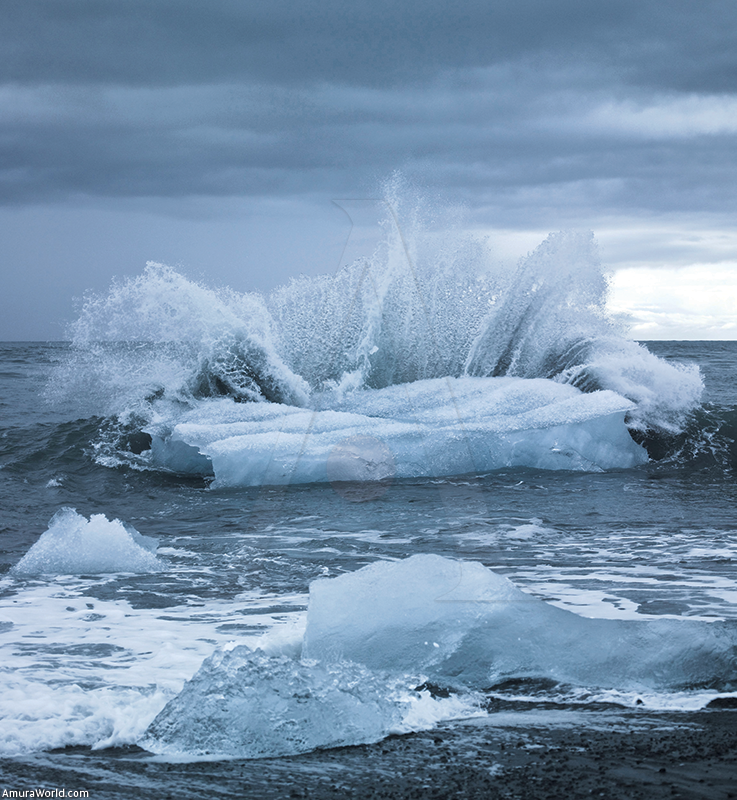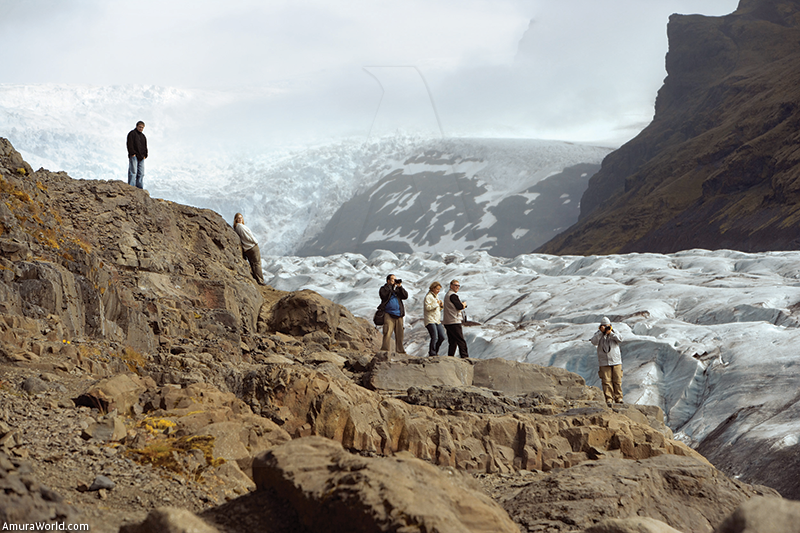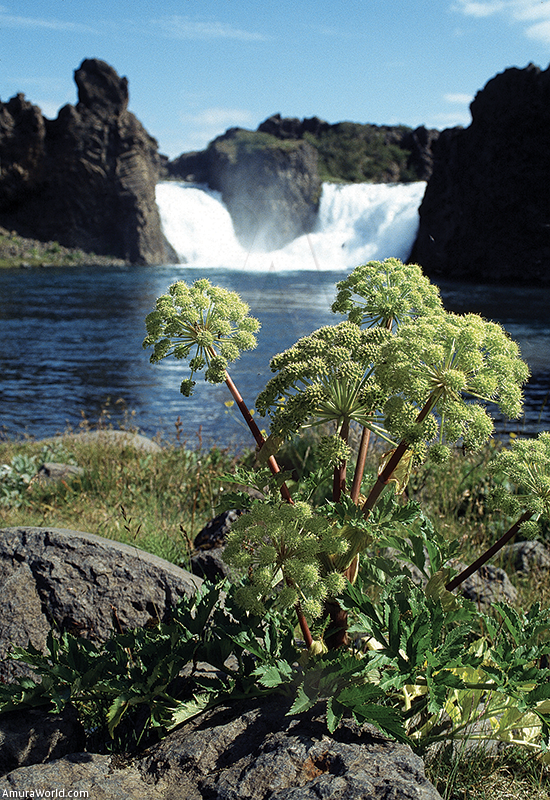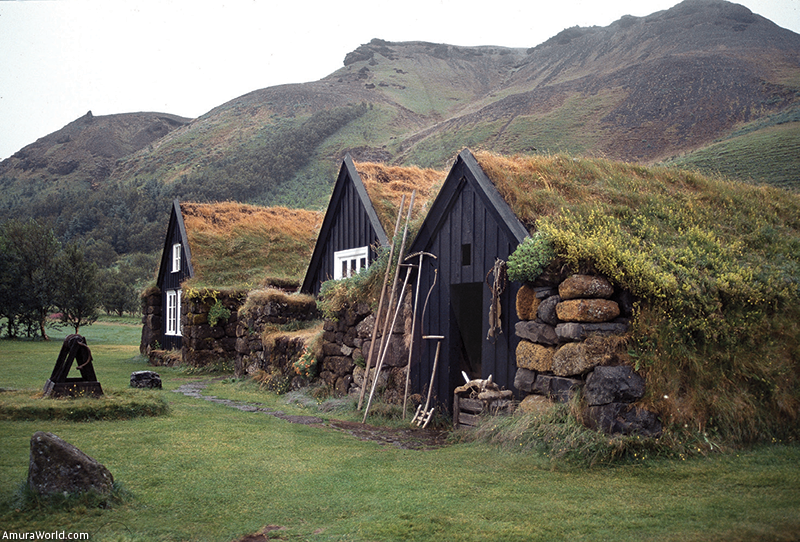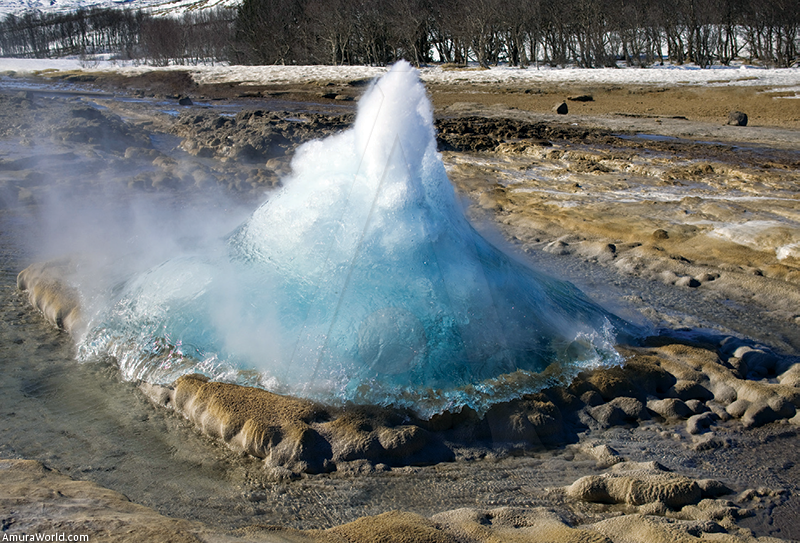The Land of Ice and Fire
Iceland, the land that inspired Jules Verne to write his most famous work “Journey to the center of the Earth” or the birthplace of artist Bjork, is becoming in one of the favorite European destinations for its many activities as well as its natural accidents like: glaciers, geysers, thermal fountains, active volcanoes, extended lava desserts, aside from its history, literature (through the Icelander sagas) and its rich and vast folkloric traditions.
Even with the difficulty of living in a place like this, the quality of life is very high, considering a IBP per capita of 30, 200 dollars, an annual growth of 1.7% and a 1.9% inflation. And since it is necessary to import basically everything; food, hou-sing and transportation prices are higher here in the North Atlantic.
This is why, Iceland is considered as the second (only behind Japan) most expensive country in Europe, where a visa in not required for Occidental, European, American, Chilean and Mexican travelers.
Even though Iceland means “The land of Ice”, it can be surprisingly hot in the summer, when the sun shines almost 24 hours a day, but this doesn’t mean the lack of freezing winds. While during the winter there can only be light for about 4 or 5 hours every day.
Before continuing and when planning your trip, it is very important to consider the fact that after August 31st, (except on Reykjavik) all hotels, youth hostels and campings close down, also bus circulations are stopped. To the end of September it looks like the whole country is getting ready to hibernate. July and August seem to be the warmest months to travel to the island. While the meridian and occidental coasts have cooler temperatures in the winter thanks to the water from the gulf currents.
Iceland offers almost all kinds of activities: trekking (along the wild landscapes); landscaping along remote landscapes like the Landmannalaugar, Látrabiarg and Hornstrandir or in Reykjanesfólkvangur; with great ski trails in Reykjavik, Akureyri, Bláfjôll (southeast of the capital) and Hlíôarfjall (near Akureyri).
Or if you preffer a sled ride across the glacier mantle of Langjôkull; pratice some rafting through the brave waters of the Hyítá (white river): or spelunking in the caves of Hallmundrhraun near Húsafell, as well as swimming in geothermic ponds.
Even doing other activities in the Artic open, Akureyri or golfing in a tournament that lasts all night long, under the midnight sun gathering amateurs and professionals from all around the world.
For all the above, this Journey from Amura Yachts & Lifestyle invites you to get closer to this island of “ice and fire”, to experience the wind’s omnipresence, to observe strange landscapes, with its glaciers and the Blue Lagoon in the lava fields, with the sole purpose of this journey to be a surreal experience.
The Capital, Reykjavik
This city (smoking bay) is located in a framed fjord by the Esja Mountain, actually known as the city without smoke, thanks to the strong winds and the use of geothermic warming, Reykjavik has a relevant historic center, wooden buildings and concrete house lines, landscapes with painteresque colored roofs. The best samples rise in the neighborhoods of Grjotaporp and Pingholt, although some of them can also be seen in the Arbar Museum of Historic Houses.
This modern city has the famous Hallgrímskirkja (honoring the most famous poet in the Island: Hallgrímur Pétursson), a spectacular church inspired on a lava mountain. Its construction star-ted on the late 40’s and was finished in 1974, to walk around a very simple and almost empty interior to further climb up the 75 meters tall tower, with the purpose of enjoying the beautiful views of the great metropolis.
Laugavegur is the main commercial street, and for the art lovers, the best stores are located in Skolavordustigur, while Kringlan is the best shopping mall in Reykjavik.
But the most attractive feature in this city is the entertainment, where alcohol is very expensive, since beer consumption was forbidden in Iceland for 75 years, until it was finally legalized in 1989. You can also attend shows about the Vikings and the Icelander Sagas, as well as cultural theater shows, opera, symphonic music and dancing almost all year round.
The National Theater and the Reykjavik Theater are two of the most important. There’s a show named the “Light Nights” where typical Icelander stories are told as well as folkloric songs. The Symphonic Orchestra offers weekly concerts. Iceland also has its own Opera Company (performances are celebrated during the whole winter).
Or if you prefer, nightlife blossoms through June and August (the period when sunlight lasts almost 24 hrs) and it is also very rich. There is a great amount of discotheques, bars, coffee shops, that can be found open until late night hours. There’s a night tour called “Runtur” that stops on the most famous places, with live music performances and discotheques.
The Glacier Kingdom
In lots of places in Iceland the geothermic of the subterranean is present and near the principal geyser zones, small villages have raised and are dedicated to the culture of greenhouses. The most famous zone is the “Geysir” from which the word Geyser comes from.
A little further to the east, two of the most active volcanoes near inhabited zones are located: The famous Hekla, which has started erupting more than 20 times, and to the east, under the Mýrdalsjökull glacier, hides the Katia, it has been asleep for a very long time now.
The yellow, red and green are the colors of the Landmannalaugar Mountains, between the black obsidian lava and the vapors emanating from the geothermic fountains.
In Kverkfjöll, spectacular caves have appeared under the glacier. And on the Mountains of Dyngjufjöll the lake Öskjuvatn stands out, a 11 km2 bolier and the Viti crater, filled with warm water. Both lakes were created after a big eruption in Dyngjufjöll in 1875. Along the automobile track of Kjölur we can find the lake Hvítárvatn, with a frozen blue at the feet of a glacier white.
In August, at Sprengisandur, the Arctic Epilobium (epilobium latifolium) paints with its violet colored flowers, the dark coastal sand, with the shining glacial whiteness in the background. In Þórsmörk there are lovely green valleys, surrounded by black mountains that dominate the environment.
Since Iceland was colonized, its inhabitants have crossed the Higher Lands from North to South on their horses’ backs, and even on foot. It was a dangerous journey, but the Icelander would take the risk, especially to go to the Parliament in Þingvellir. In the foggy times they risked the chance of getting lost in the way; with strong winds, the chance of loosing their lives or starving to death if the journey was too long.
Fortunately, nowadays things are way easier and thanks to modern transportation methods, travelling from north to south or veceversa takes only about a day, taking the route of Kjölur or through Sprengisandur.
There are auto-car guided excursions through both ways, as well as to Þórsmörk, Landmanna-laugar, Askja and Kverkfjöll. But of course, you can travel on your own, either by a rental car or your own. But please remember these routes are only available for all-terrain vehicles.
Even the routes of Kaldidalur and Kjölur, which are officially no longer high mountain tracks (since they don’t have a road indication that stars with an F) they can be very difficult to transit, and the ca rental agencies prohibit their clients to transit on them, unless they rent a 4x4 vehicle.
West Fjords
One of the regions catalogued as the wildest and less inhabited on the island, is the West Fjords. With its vertical cliffs like the Látrabjarg (444 mts) -the “Finisterre” of Europe- and the Hornbjarg (534 mts), this cliffs will sincerely take your breath away. The Dynjandi jump is even more amazing, whose waters appear to lick the side of the mountain.
In the West Fjords the geological history of Iceland can be touched, from its creation 15 or 16 millions of year ago, until the colonization in the 9th Century, when the volcanic activity ceased in this zone.
The oldest rocks can be found in Kögur and the youngest at the bottom of Borgarfjörður. This history is reflected on the landscape diversity, with all class of volcanoes and geothermic, from the mineral water fountains to the mightiest geyser in Europe: the Deildartunguhver.
One of the places with more volcanic evidence is Snæfellsnes with its mythical Snæfells-jökull and its national park, surrounded in a Sustainable Touristic Zone, certified by the Green Globe 21.
Breiðafjörður is the ornithologists paradise, and in the Fjords, the three biggest bird cliffs in Europe can be found: The biggest is Látrabjarg the last watchtower towards the west. The Weast and Breiðafjörður, heavily inhabited since the colonization, are the frame for many of the sagas that extend their action all the way to the Fjords.
Another place that deserves a visit is Eiríksstaðir, the home of Eric the Red, where his son Leif the Fortunate was born, who allegedly discovered America in the year 1000, five hundred year before Colon.
Fishing and Hunting/strong>
Iceland if famous for its trout and salmon fishing. The main season for salmon fishing is from June 20th until mid September. For trout fishing dates vary from one river or Lake to the other, but the regular season goes from the months of April-May until late September and the beginning of October.
During the winter, ice fishing can be practiced through holes in the ice, an activity that is becoming more and more popular. For the salmon fishing, a fishing permit is needed and should be processed with some anticipation, while the trout permit can usually be obtained the same day.
Fishing aboard with fishing rods is also becoming a very popular sport in Iceland. Season starts in late May and ends in late August, with several tournaments in different parts of Iceland.
Golfing in Iceland
The main golf courses in Iceland are open to fo-reign visitors. The green fee prices are moderate.
The Arctic Open at the Akureyri Golf Club is an event that allows the participation of Amateur as well as Professional players, and can be played under the midnight sun. Toward the end of July an international 36 holes tournament is celebrated. The first stroke is taken just before midnight and it lasts all night.
Trail-Hiking Excursions
More than half of Iceland’s surface more than 400 m above sea level and a grat part of the country is covered with lava, glaciers, lakes and sand. In several places throughout Iceland, trails and roads are marked and hiking is one of the Icelanders and tourists favorite hobbies. Tourist information centers give out information about hiking in their area. A lot of travel agencies even organize hiking excursions in the summer and winter alike.
Active Vacations
A lot of activities can be done around the country. An active vacation can include rafting (river descent) hiking excursions, trips to the glaciers, fishing, horseback riding, boat rides, whale watching, swimming and water skiing in the summer and the next places can be a great option:
Vioey Island.- One of the tourist destinations near Reykjavik that can be accessed by boat (sets sail from the dock of Sundahöfn). Vioey Island is a natural paradise where numerous different bird species are nesting and a place where you can enjoy having contact with nature.
Pingvellir Lava Field.- An excursion to the Pingve-llir lava field can be made by car , the field offers a beautiful natural show in which, among other marvels: the Throat of Humanity, the rock of Law (Lögberg), the Flosi throat, the Ôxara and Pingvallabaer waterfalls and the Mansion where all the chiefs of state visiting the country use to stay can be admired. Another attractive in this place is the Almannagjá where the American tectonic plaque is located.
Haukadalur.- This place is known for having two geysers: the “Geysir” and the “Strokkur”. Geysir was an ancient thermal fountain of boiling water, which remains inactive these days. The Strokkur Geyser was drilled in the year 1964 and is still working and propelling hot boiling water 30 meters high above the ground.
The Golden Waterfalls (Gullfoss).- Gullfoss is a water jump from the Hvíta river that precipitates 31 meters high, near this area a place called Pjaxi is located, where the grass covers the smooth hills almost completely surrounding a landscape filled with spring water and small rivers.
Skalholt.- This ancient place of cult was founded in 1056 (host for the archbishopric of the south until the 18th century) and it hosted 11 temples. The church that can be seen these days was consecrated in the year 1963. On the interior works of art like the Nina Tryggvadottirs altarpiece and the crystal work of Gerour Helgadottir can be admired.
The Blue Lagoon (Blaa Lonid).- Located a few kilometers away from the city, in the middle of a great lava field, this Mediterranean blue lake, together with the geothermic station of Svartsengi, make an hyperrealist landscape. The station is a source of clean and renewable energy that justifies the absolute absence of pollution in Iceland. The water from the lagoons is warm, rich with minerals and possesses healing powers (they are said to heal Psoriasis).
Everything is Different Here
The culinary arts in Iceland are a true boom, specially on Reykjavik, where international chefs create spectacular dishes based with excellent ingredients. For example the “Humarhúsið” is the main restaurant specializing in crayfish. And in the “Þrír frakkar” a delicious traditional cuisine can be enjoyed with dishes like whale meat or codfish.
A place with spectacular visits is what the Pearl (Perlan) can offer, a restaurants located over the geothermic water deposits that provide the whole city of Reykjavik with heating.
From the places that are in everyone’s mouth we have the “Sjávarkjallarinn” where Lárus Jónasson offers a great shellfish or the “Hotel Holt” where Birgir Karl Ólafsson dominates french cuisine. And what about the Nordic fusion of “Vox” at the “Nordica Hotel”.
There are popular places to have lunch between the ages of 30 like the “Apótek” and the “Hótel 101” for cute people we have the “Vegamót” and “Kaffi Sólon”. The “Ban Thai” offers one of the best Thai foods. For dinning out of the capital we can mention the “Fimm fisgar” in Stykkishólmur and the “Við fjöruborðið” in Stokkseyri.
And for a typical exquisite Icelander meal we have the “Hangikjöt” (smoked lamb), the “Skyr” (some kind of yoghurt), the “Harðfiskur” (dry fish) or the “lundi”. What about the Regaliz Icelander chocolate (or regaliz-chocolate) and the Opal tablets. And if you go through Iceland right before Christmas, you will be able to get you hands on some “jólaöl” (a holiday soda: a orange flavored drink mixed with malt) and some “Laufabrauð” (a fine bread).
And if these recommendations are useful, here’s a list of the most important dates and holidays that are celebrated during the year:
January-May: Cultural Season (music, theater, and other arts).
From January 23rd to February 22nd: Winter celebration (Þorrablót) an old Viking tradition where several “delicacies” are tasted, like roasted lamb head.
From February 23rd to February 25th: The “party” days. The “Fritter Monday” eat all the cream fritters you can before Lent, and the “Party Tuesday” with big portions of salted meat and peas soup.
February: The celebration of Light at the Laugardalur Park, Reykjavik.
March 1st: The Beer Day. Beer wasn’t legalized until 1989, so people celebrate this great day accordingly every year.
From march 18th to March 22nd: “Food & Fun” the annual culinary festival whit the participation of world chefs competing against the best chefs in Icelander cuisine.
From April 9th to April 13th: The Holy Week, where classic and ecclesiastic music concerts are celebrated all over the country.
April 23rd: First day of summer, to celebrate the end of winter and the beginning of summer.
April-September: Trout fishing season in lakes and rivers all over the country.
April-October: Whale watching season, with thousands that are very close to the shores.
May: Time for bird migrations in the Vestman Islands in front of the south coast.
From May 15th to May 30th: The Reykjavik Art Festival, see: www.artfest.is.
May-September: Salmon Fishing Season.
June 6th and 7th: Sea-Day Marine Festival, with entertainment programs and games in all the marine and fishermen ports.
From june 12th to June 17th: The Vinking Festival of Hafnarfjörður. More tan 100 Vikings from different countries are united with around 60 Icelander Vikings to enjoy a weekend of games and celebrations.
June 17th: National Holiday. Icelanders take over the streets to celebrate the foundation of the Republic in 1944. Colorful ceremonies followed by parades, street theater, performances and dancing under the midnight sun all over the country.
June 21st: Summer Solstice. Celebrations and reunions in several places of the country to celebrate the magic of the midnight sun, the longest day in the year.
From June 25th to June 27th: The International Arctic Golf Open in Akureyri, very close to the Arctic Polar Circle, you will be able to play golf under the midnight sun until the next morning, in a marvelous natural environment. Also other midnight Opens are celebrated in Reykjavik and the Vestman Islands. See: www.arcticopen.is and www.golf.is.
June-August: Marathon season. Pure air in a beautiful scenario that will take your breath away.
August 22nd: Culture Night in order to celebrate Reykjavik as a Municipality, the museums and libraries stay open until late in the morning.
September-December: Cultural an Festival Season. Concerts, opera, ballets, theater, visual arts and any other thing you wish, you will find it in Reykjavik during these days.
September: Picking up the wool livestock.
From October 15th to October 19th: “Iceland Airwaves” an alternative music festival that is gaining popularity as one of the best.
Iceland is a young land, still forming, where volcanoes, glaciers, lava flows, cliffs and waterfalls present all the colors in the rainbow in a unique confrontation with the elements: wind, light, transparent air and huge spaces.
Text: Fabiola Galván Campos ± Photo: Getty Images, Icelandic Tourist Board y Flickr.

